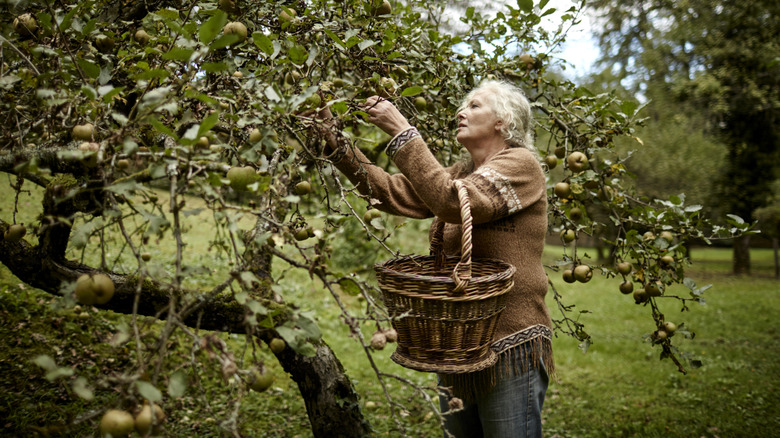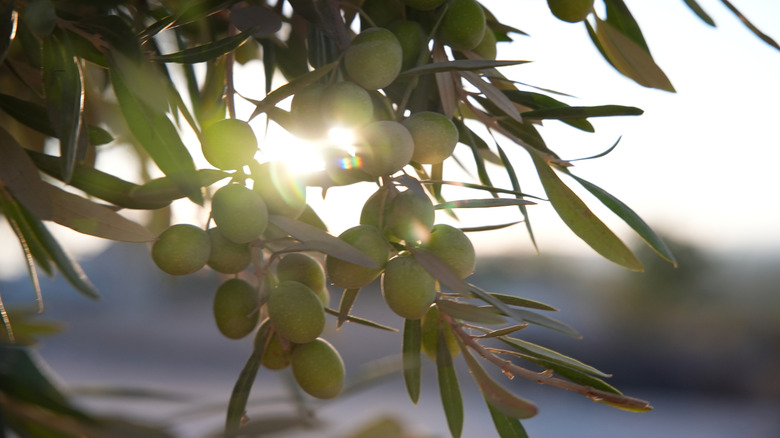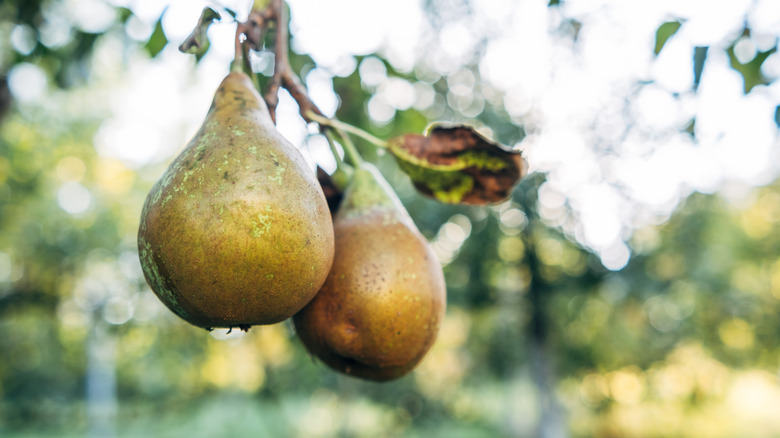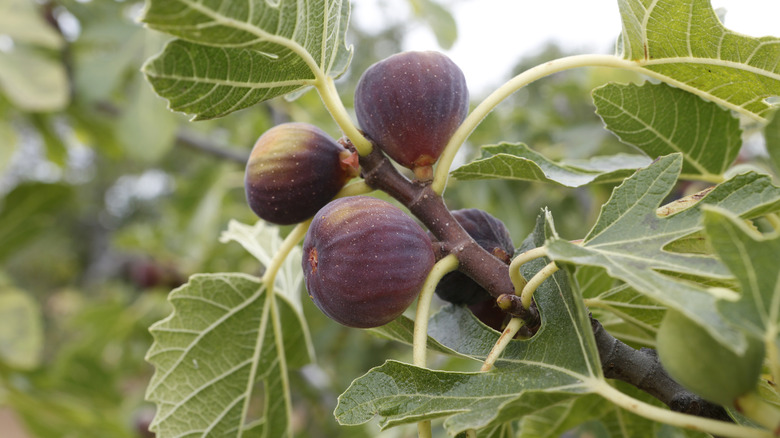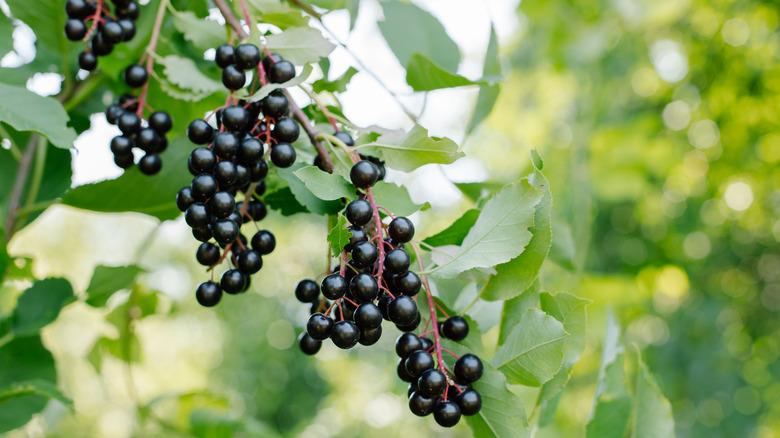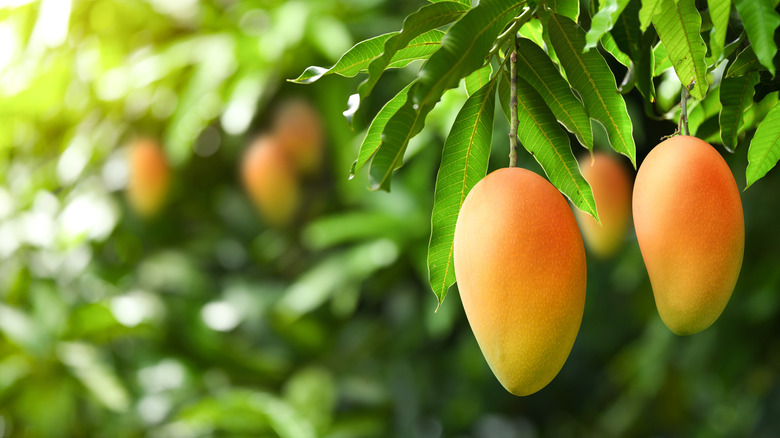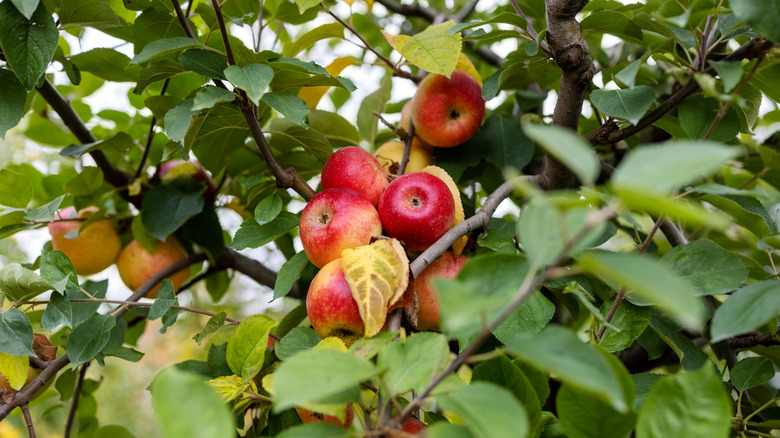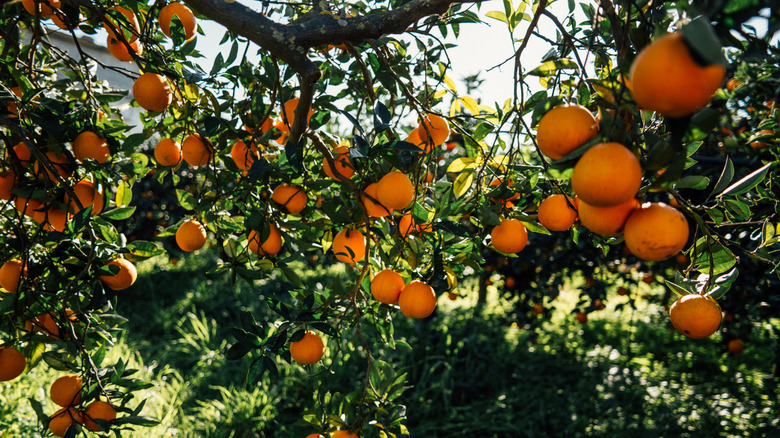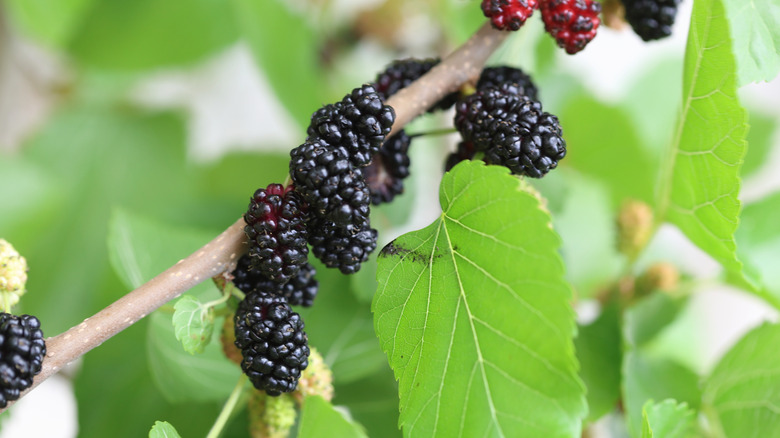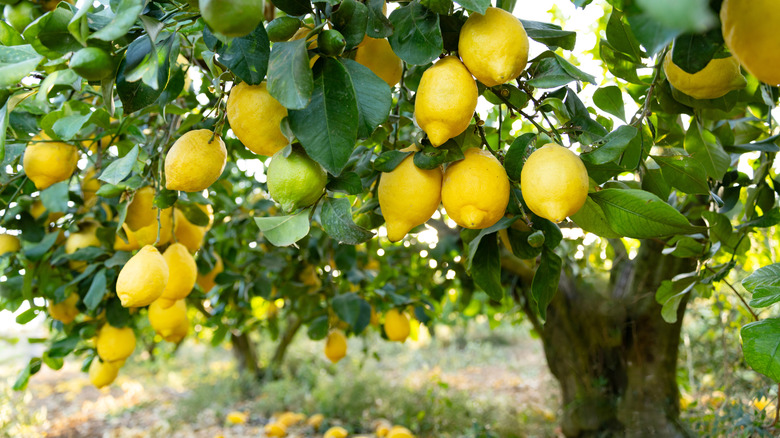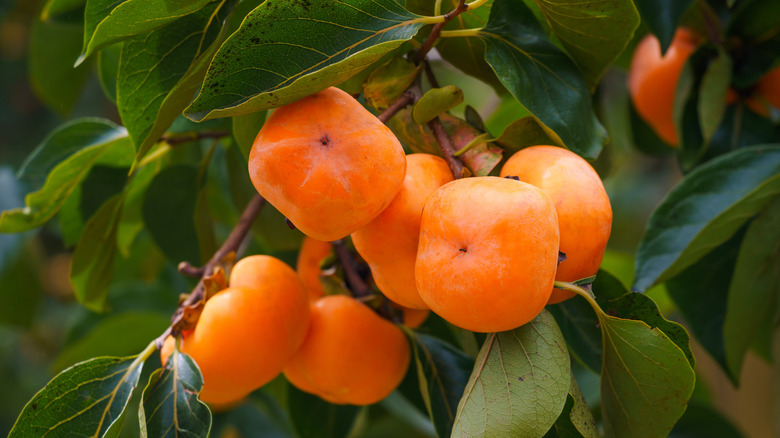10 Fruit Trees That Can Grow Fruit For Over 100 Years In Your Backyard
Many favorite edible garden plants live for as little as a single year; a few can last a decade if you're lucky. But there's one type of harvest-producing plant that blows these modest lifespans out of the water, potentially living long enough to feed your family for generations: fruit trees. Not all fruit trees are this long lasting, but there's plenty to choose from for a range of climates, including persimmons, pears, mangos, and figs.
A fruit tree that remains alive for this long can almost feel like it's part of the family — but it will only stay productive into old age if it stays in good health. Once your tree is planted, taking good care of it in its early years is the key to growing a strong specimen that flourishes for a century or more. That includes keeping the tree tidy and cleaning up dropped fruit and leaves regularly, as well as regular pruning, which not only strengthens the tree but also keeps it free of disease.
Since pests and diseases can be the Achilles' heel that takes an otherwise strong tree down, it helps to get a disease-resistant variety. Shop at a reputable tree nursery rather than a big box store. Of course, choosing a tree that's well-suited to your local climate is also essential. Here are 10 trees that are known to grow fruit for 100 years and more.
Olive tree
Olives are not typically thought of as a fruit, but indeed, some of the most ancient fruit trees in the world are olive trees (Olea europaea). Many specimens are thousands of years old and have survived a range of natural disasters, with some still producing olives to this day. You can even buy olive trees that are already 500 to 1000 years old! The tricky part here is climate, as the best conditions for an olive tree are hot, sunny, and dry, and most are only hardy in zones 8 to 11.
Pear trees
Pear trees can live for centuries, but you must choose your species and cultivar carefully. For example, quick-growing 'Bradford' pears (Pyrus calleryana 'Bradford') only live to around 25 years, but the oldest cultivated fruit tree in the U.S. is a European pear tree (Pyrus communis), which has reached an age of nearly four centuries and is still producing fruit. Pear trees are typically hardy in zones 3 to 10 and require full sun and annual pruning. You'd typically have to grow two compatible varieties, so they can cross-pollinate and produce fruit.
Fig trees
Fig trees (Ficus carica) are another example of a fruit tree with ancient specimens. One fig tree in India is more than 2,000 years old. With few pest problems, these trees will produce one or two crops of figs per year. They are hardy in zones 6 to 9 and can be damaged by temperatures below 20 degrees Fahrenheit; in cold climates, it's easier to grow fig trees in a container and bring them indoors in the winter. They are not picky about soil but require full sun and consistent moisture.
Black cherry trees
Black cherry trees (Prunus serotina) are native to North America, and some have grown to more than 250 years old. They are most productive at ages 30 to 100 — plenty of time to pass on the joy of cherries in your backyard. Planting location is a major consideration here: Black cherry trees only grow a foot or two per year, but they eventually reach heights of up to 90 feet, and the roots need plenty of space to spread out. Dropped fruits can also cause stains, so an out-of-the-way spot may be best. These trees are hardy from zones 3b to 9a and grow best in full sun to partial shade.
Mango trees
While some trees produce less tasty fruit the older they get, mango trees (Mangifera indica) are the opposite — the fruit gets yummier as the tree matures. They begin producing within a few years of planting and continue to fruit for more than a century. As a tropical fruit, mango trees require full sun and are only hardy in zones 9 and up, though you can grow them in containers in zones 4 and above and keep them indoors in the winter. Dwarf varieties are best for pots. Outdoor mature mango trees can reach up to 130 feet, but garden trees can easily be kept much shorter, around a height of 10 to 13 feet.
Apple trees
Quintessential American fruit trees, apple trees are in their prime while relatively young, reaching peak production at an age of 25 years. But they can live to more than 100 years old with the right care. For example, one apple tree in the Pacific Northwest is almost 200 years old. They can take up to eight years to start producing fruit. To maximize yield from older trees, diligent pruning is key. Apple trees also require full sun, and you must grow two varieties for pollination (though neighborhood crabapples could also work).
Orange trees
More than 400 types of orange trees (Citrus × sinensis) exist. Some have lifespans of just a few decades, like Valencia oranges, but some can live to well over 100, like the Washington navel orange. Luckily, the latter is also the most popular variety for home gardens because it produces big, sweet fruits with no seeds. As self-fertile trees, they can produce fruit with no cross-pollination needed. Oranges are hardy in zones 9 to 10 and require full sun. Expect fruit production to peak in the first 10 to 15 years.
Mulberry trees
Mulberry trees generally live 25 to 50 years, but some species are much longer lasting: Black mulberry trees (Morus nigra) live up to 1,000 years, white mulberry (Morus alba) up to 250 years, and red mulberry (Morus rubra) up to 125 years. These also happen to be the three most common mulberry species in North America. However, white mulberry is considered invasive in a number of eastern states, so black or red mulberry are the better choices. Red mulberry is native to the U.S. and hardy in zones 4 to 9. Do not eat unripe mulberries, as they are poisonous until fully ripe.
Lemon trees
Another citrus variety, lemon trees (Citrus × limon) continue to produce fruit for their entire lifespan: 50 years on average, but often over 100 years. They're hardy in zones 9 to 11, where they remain evergreen; you can also grow a lemon tree indoors and move it outdoors when it's warm enough. Lemon trees need plenty of sunlight and are thirsty during the growing season but require minimal pruning. They work wonderfully in greenhouses. Just be careful when potting up, because lemons don't like having their roots disturbed.
Persimmon trees
Persimmons can live to well over a century, fruit and all. The common persimmon tree (Diospyros virginiana) produces fruit each fall and is hardy in zones 4b to 9b; it's native in much of the U.S. Most cultivars require two trees, one male and one female, for pollination and fruit production, and some also need a period of frost for the fruit to ripen. Persimmon trees can grow quite tall, so make sure you have enough room. These trees prefer full sun and slightly acidic soil.
